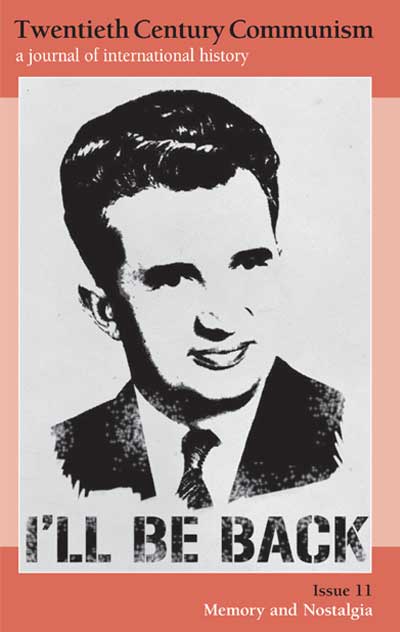
Nicolae Ceausescu: between vernacular memory and nostalgia
Twentieth Century Communism - Print ISSN 1758-6437 - Online ISSN 2978-1329
Volume 2016 Number 11
Nicolae Ceausescu: between vernacular memory and nostalgia
Maria-Alina Asavei
Abstract
The hierarchical ranking of history, memory and nostalgia classifies the ubiquitous enactments of Nicolae Ceausescu from the vernacular memory of post-communist Romania as “unhealthy nostalgia” for the communist past. This paper explores various instances of Ceausescu’s memorialization as reflected in contemporary art and living memorials inked on the skin (nostalgia tattoos). These vernacular memorials and commemorations of the former communist leader occasion a peculiar culture of remembrance where “nostalgia” for Ceausescu exceeds its boundaries of meaning and becomes a term which can be mobilized against present wrongdoings and capitalist injustices. From an epistemological narrative standpoint, this paper attempts to argue that to construct a harmonious but counterfeit picture of the past (in which Nicolae Ceausescu and his era are exclusively demonized) is not desirable or acceptable because the individuals (and the communities) who remember that past are not homogeneous and their memories and longings for the past are not similar. Thus, nostalgia ought not to be understood exclusively as an abnormal (unauthentic, unhealthy) memory of the past but rather as a peculiar form of memory illuminating a healthy critique of the present in the light of the past.
To cite this article
Maria-Alina Asavei (2016) Nicolae Ceausescu: between vernacular memory and nostalgia, Twentieth Century Communism, 2016(11)
